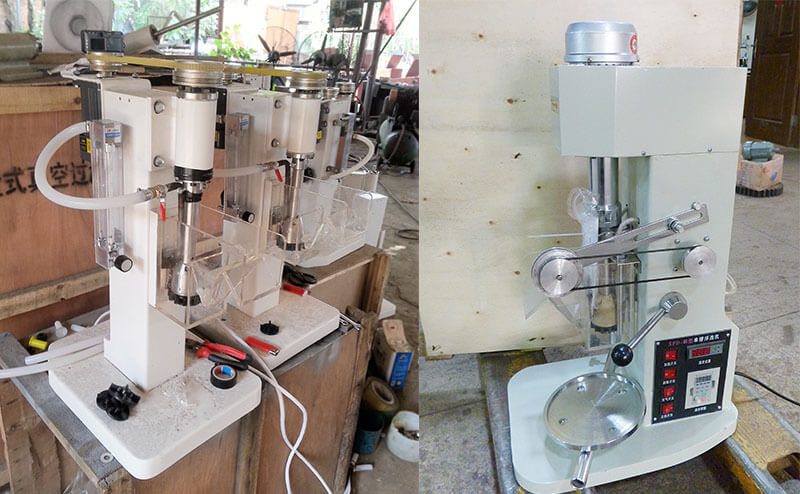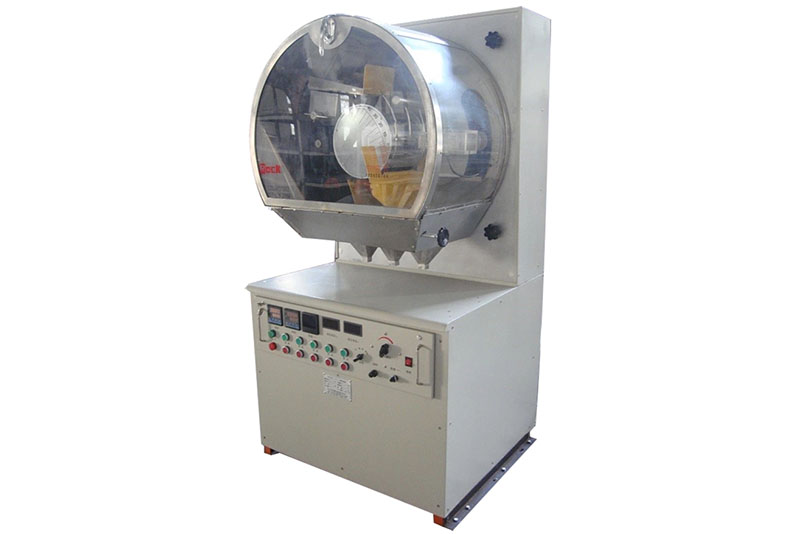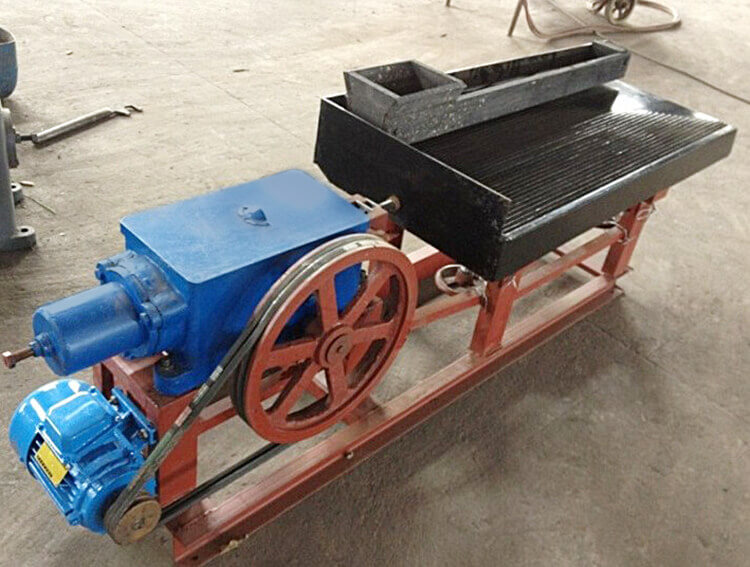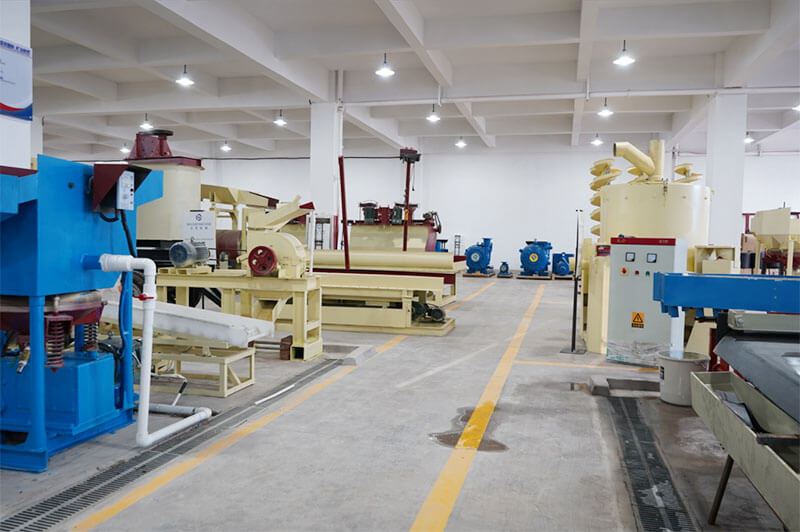The vibrating screen is a mechanical screening equipment. It is a machine of screening, grading, and filtering materials through the vibration force and screen mesh. The laboratory vibrating screen is suitable for scientific research and factory laboratories in metallurgy, geology, combustion, construction, cement, and other departments to screen materials. This screening machine can also divide materials into two or three particle sizes. If it needs to screen two particle sizes, place a blank screen frame at the bottom of the upper screen, supporting the screen frame for single-layer use. According to usage needs, replace four layers of screens with multiple levels. So how does a small vibrating screen work?
Application
- Mining and Metallurgy: Vibration screens are widely used in mining and metallurgical processes such as ore screening, ore beneficiation, and coal washing. It performs particle size classification and separation of raw materials, improving the grade and yield of ores.
- Building materials: It uses vibrating screens for screening and grading materials such as sand, mortar, and cement in the construction materials industry. It can remove impurities, control particle size, and ensure the quality and consistency of building materials.
In short, vibrating screens play an important role in many fields, performing screening, grading, filtering, and separating various materials. It has the advantages of improving production efficiency, ensuring product quality, and reducing resource waste and environmental pollution.
Small Vibrating Screen
This machine typically consists of the following main components:
Screen box
The screen box is the external structure of a vibrating screen, usually made of metal, with high strength and stiffness. There is a screen installed inside the sieve box for screening materials.
Vibration machine
The vibration machine is the power source of the vibrating screen, usually consist of an electric motor and a vibrator. The electric motor provides power, while the vibrator converts the rotational motion of the electric motor into vibration force.
Discharge port
The vibrating screen has multiple discharge ports for separating and collecting materials of different particle sizes. These discharge ports can be set in various positions to achieve the separation effect of coarse and fine sieves.
Screen
A screen is a mesh structure inside the screen box, usually made of metal wire or plastic. The aperture size of the sieve is adjustable and achieves screening of different particle sizes.
Working steps
The vibrating screen screens the materials through vibration force and screen mesh. Its working steps is as follows:
The vibrating machine generates vibration force
The vibrating machine (usually an electric motor and vibrator) in the vibrating screen generates vibration force. It transmit vibration forces to the screen box and screen through the excitation components of the vibrating machine.
Materials entering the screening box
The materials enter the screening box through the feeding port. The screen box is the external structure of a vibrating screen for accommodating the 2. vibrating machine and screen mesh.
Transmit vibration force to the screen box and screen
The vibration force is transmitted to the screen box by the vibration machine, causing the entire screen box to vibrate. At the same time, the vibration force is transmitted to the screen through the screen box.
Material screening
Due to the action of vibration force, the material begins to move inside the screening box. Smaller particles will pass through the aperture of the sieve, while larger particles cannot pass through the sieve, thus achieving material screening.
Separation and collection
Different particle sizes of materials are separated and collected through the discharge port of the sieve. Multiple discharge ports are adjustable for achieving the separation of different particle levels.
Cleaning and maintenance
In the coarse of work, some small particles may adhere to the sieve, affecting the screening effect. Therefore, regularly cleaning the sieve is necessary to maintain its screening efficiency.
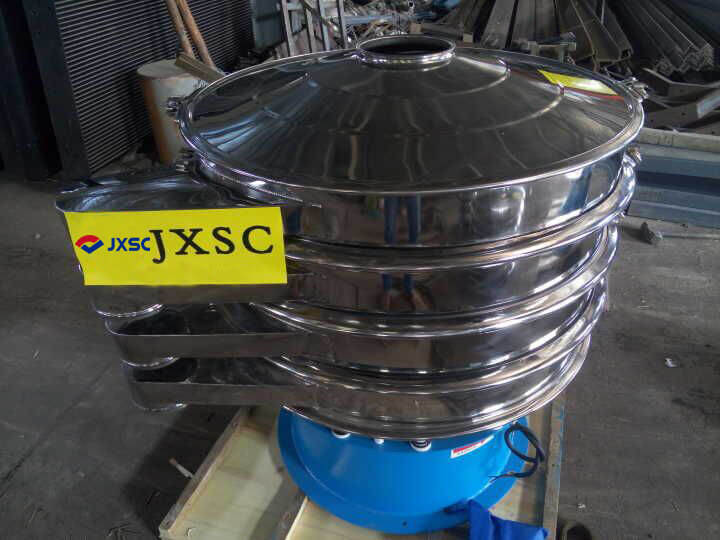
Types Of Vibrating Screen
According to different classification standards, there are various types of vibrating screens. The following are several common types of vibrating screens.
Linear vibrating screen
Linear vibrating screen is the most common and basic vibrating screen. It generates linear motion of the material on the screen through a single direction of linear vibration force. Linear vibrating screens are suitable for screening and grading small and medium-sized particles.
Circular vibrating screen
Circular vibrating screen is a screening equipment that uses circular vibration force. It evenly distributes materials on the sieve through circular motion, suitable for screening small particles and powder materials.
Mining vibrating screen
The mining vibrating screen is a vibration screening equipment used in the mining industry. It uses vibration force and the action of screen mesh to screen and classify mining raw materials such as ore and slag.
Laboratory small vibrating screen
It is a vibrating screening equipment used in laboratory environments. Based on the action of vibration force and screen mesh to perform particle size analysis and screening on laboratory samples. This equipment has wide applications in experimental and research work like particle analysis, material screening, and quality control.
Characteristics
- Small in size, light in weight, easy to move, with adjustable discharge port direction. Automatically discharge coarse and fine materials and automatically or manually operate.
- High screening accuracy and efficiency, suitable for powder, particle, and viscous liquids.
- The sieve is non-blocking, the powder does not fly, and the screening fineness reaches 500 mesh (28 microns). The filtration fineness reaches 5 microns.
- Unique mesh design, long-lasting screen use, convenient screen replacement, only 3-5 minutes, simple operation, and easy cleaning.
- No mechanical action, easy maintenance, can be used in single or multiple layers, and the parts are in contact with materials stainless steel.
JXSC lab mineral processing equipment manufacturer has more than 38 years of experience in mining processing. We provide various lab mining equipment including gravity-separating equipment for processing minerals such as gold, tin, tungsten, lead, zinc, tantalum, niobium, iron, manganese, silver, titanium-iron, etc. Lab machines include laboratory jaw crusher, hammer crusher, roller crusher, grinding equipment, lab gravity separator, screening, washing equipment, etc. Welcome to consult!

